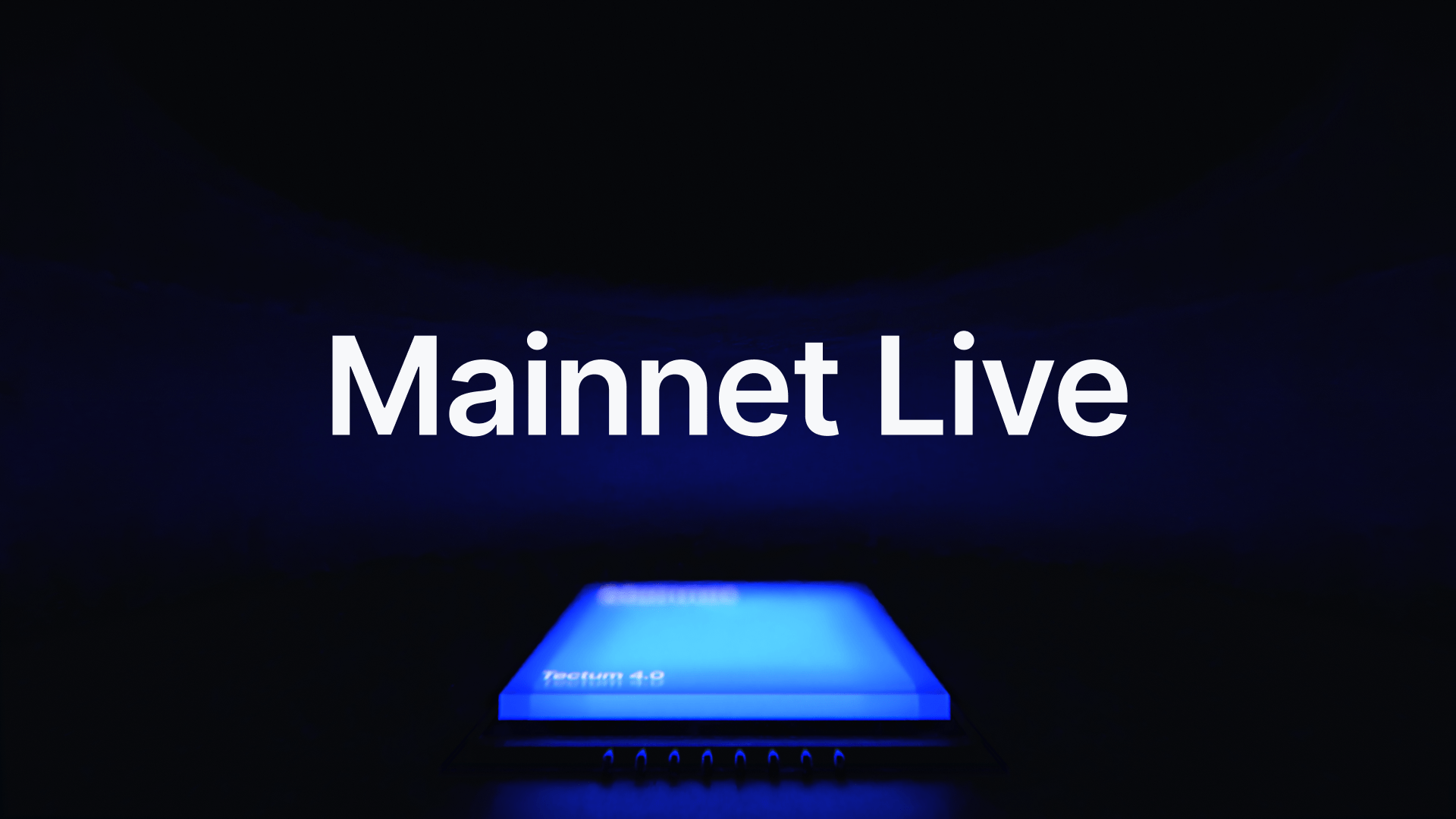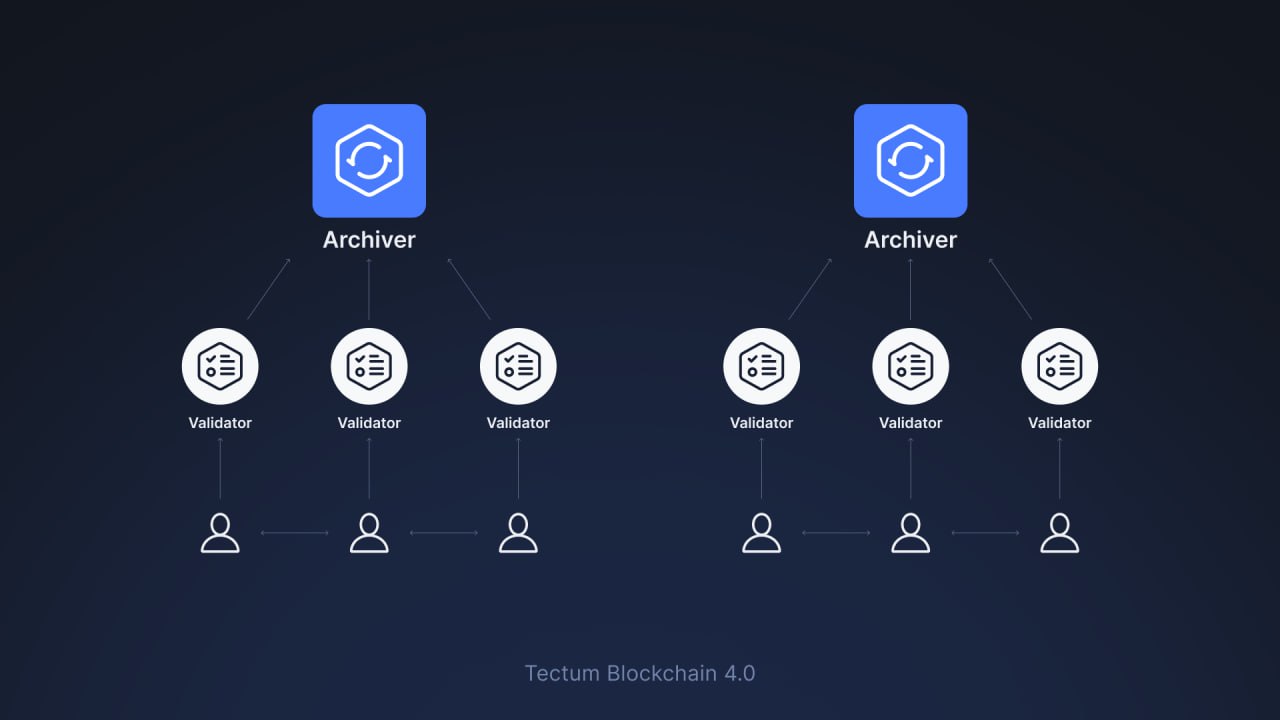We have successfully launched the Tectum Blockchain 4.0 mainnet to enable users to enjoy the amazing benefits of the most comprehensive decentralized network. This comes after several weeks of releasing the testnet, which underwent numerous tests by developers.

In line with our public blockchain rollout plan, this version of our blockchain will work hand-in-hand with the Tectum Node 4.0.
This article will outline improvements users should expect from the Tectum Blockchain 4.0 mainnet. It will also illustrate how the Tectum Node 4.0 will interact with the network.
Tectum Blockchain 4.0 Mainnet: Understanding the Architecture
There are three essential components of the Tectum Blockchain 4.0 mainnet. They include the following:
- Tectum Node Validator
- Tectum Node Archiver
- Tectum Key Archiver
For a better understanding, here are the functions of these components:
Tectum Node Validator
Individuals and corporations that have staked Tectum Emission Tokens will access the enhanced functions of the network. Locking TET in the Tectum Node allows interested individuals to validate transactions on the Tectum network. For a better understanding, think of Node Validators in the same vein as miners. However, unlike miners, these individuals do not need expensive hardware or high energy demands to participate in the Tectum network.
Meanwhile, the Node Validators may function as the airport security personnel who quickly make sure that you meet all the necessary clearances and, right after the check, allow you to proceed further.
Tectum Node Archiver
Node Archivers are a level above Node Validators. Recall that Node Validators “validate transactions”? Node Archivers are like a second security layer that authenticates already-validated transactions. Still using the airport security analogy, these are the equivalent of Immigration and Customs that check you in and tag your bags for easy identification.
After authenticating the validated transactions, Node Archivers send them to the Key Archiver. In addition, this component also calculates the rewards that validators get for contributing to the network. The transfer commissions are sent to the validators’ accounts and the distribution commissions to the key archivers’ accounts. This is the equivalent of your bags (transactions) being transferred to be loaded onto the plane.
Tectum Key Archiver
The Key Archiver is the record keeper and final step of a blockchain transaction. This component stores the information containing every transaction in blockchains that are added to the existing chain. It does not validate or authenticate any transactions but simply stores them on the chain.
For a better understanding, let us stick to the airport security example we have used so far. The Node Validator has patted you down and cleared you, while the Node Archiver has authenticated your documents and tagged your bags. The Key Archiver is the equivalent of storing your checked-in luggage in the plane. This is essential because you can only access your luggage at your destination if it is transferred and stored at the back of the plane.
How the Tectum Blockchain 4.0 Mainnet Achieves Consensus
Looking at the components above, you can start seeing patterns in how it works.
Validators do preliminary checks to verify the transactions. They validate signed transactions received from the Node Archiver and also provide feedback on results. On their part, Node Archivers oversee reward distribution, gather results from validators, and perform several other tasks.
Initially, we compared Node Validators to Bitcoin Miners. However, we also drew a distinction that these individuals do not jostle for transactions or require expensive and energy-consuming setups.
The reason is that Node Archivers receive and distribute transactions among validators. It then receives and authenticates these validated transactions from the Node Validators before sending them to the Key Archiver, who stores them permanently on the blockchain network.
As a final security measure, all Node Validators will receive updated versions of the blockchain and validate it. They constantly check for discrepancies before validating it and will not update their version of the blockchain until they receive a valid update.
For one last time, let’s use the airport security example. Before then, here is a quick definition of the terms:
- Blockchain Transactions – Bags/Luggage
- Node Validators – Airport Security
- Node Archivers – Immigration and Customs
- Key Archivers – Luggage Loaders
Immigration and customs welcome you to the airport and direct you to the airport security with the shortest queue so that you can complete the process and board your plane soonest. The airport security does the preliminary screening before sending you back to immigration and customs.
Immigration and customs screen your documents and tag your bags before sending your bags to the luggage loaders. Luggage loaders load all bags and send a manifest to immigration confirming the number of bags loaded onto a specific plane as well as their owners’ names.
Immigration sends a copy of the airport security for confirmation before the plane leaves. Airport security either confirms that the details are correct or raises concerns where there are discrepancies.
